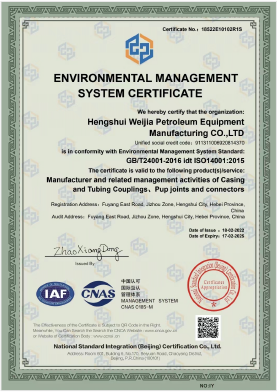- Afrikaans
- Albanian
- Amharic
- Arabic
- Armenian
- Azerbaijani
- Basque
- Belarusian
- Bengali
- Bosnian
- Bulgarian
- Catalan
- Cebuano
- Corsican
- Croatian
- Czech
- Danish
- Dutch
- English
- Esperanto
- Estonian
- Finnish
- French
- Frisian
- Galician
- Georgian
- German
- Greek
- Gujarati
- Haitian Creole
- hausa
- hawaiian
- Hebrew
- Hindi
- Miao
- Hungarian
- Icelandic
- igbo
- Indonesian
- irish
- Italian
- Japanese
- Javanese
- Kannada
- kazakh
- Khmer
- Rwandese
- Korean
- Kurdish
- Kyrgyz
- Lao
- Latin
- Latvian
- Lithuanian
- Luxembourgish
- Macedonian
- Malgashi
- Malay
- Malayalam
- Maltese
- Maori
- Marathi
- Mongolian
- Myanmar
- Nepali
- Norwegian
- Norwegian
- Occitan
- Pashto
- Persian
- Polish
- Portuguese
- Punjabi
- Romanian
- Russian
- Samoan
- Scottish Gaelic
- Serbian
- Sesotho
- Shona
- Sindhi
- Sinhala
- Slovak
- Slovenian
- Somali
- Spanish
- Sundanese
- Swahili
- Swedish
- Tagalog
- Tajik
- Tamil
- Tatar
- Telugu
- Thai
- Turkish
- Turkmen
- Ukrainian
- Urdu
- Uighur
- Uzbek
- Vietnamese
- Welsh
- Bantu
- Yiddish
- Yoruba
- Zulu
3 inch steel pipe coupling
Understanding 3 Inch Steel Pipe Couplings Essential Components in Piping Systems
When it comes to piping systems, the details often dictate the efficiency and reliability of the overall structure. One critical component that plays a significant role in ensuring seamless fluid transfer and structural integrity is the coupling. In this article, we will focus specifically on 3 inch steel pipe couplings, examining their materials, types, applications, and importance in various industries.
What is a Coupling?
A coupling is a device used to connect two segments of pipe, allowing for the secure transfer of fluids such as water, gas, or oil. Couplings help in maintaining the alignment of the pipes and can accommodate minor shifts or movements in the piping system. In industrial applications, where heavy-duty performance is often required, steel couplings become invaluable due to their strength and durability.
Material Matters Why Steel?
Steel is a popular choice for manufacturing couplings, particularly in heavy-duty applications. The material properties of steel, including its high tensile strength, resistance to corrosion (especially when treated), and ability to withstand high temperatures and pressures, make it ideal for creating reliable and long-lasting couplings. Compared to plastic or softer metals, steel offers superior strength, making it suitable for environments with high demands.
Types of Steel Pipe Couplings
There are various types of steel pipe couplings available on the market, each designed for specific applications and conditions
1. Socket Weld Couplings These couplings are used for smaller diameter pipes and involve inserting the pipe into the coupling socket. A weld is then applied to create a strong connection. This is ideal for high-pressure applications.
2. Threaded Couplings Designed with internal threads, these are used for pipes that also have external threads. They allow for easy assembly and disassembly, making them preferable in applications where maintenance is frequent.
3. Slip-on Couplings These are slipped over the end of the pipe and welded into place. They provide a smooth transition between two segments and are often used in larger diameter pipes.
3 inch steel pipe coupling

4. Compression Couplings These utilize a compression mechanism to join two pipes without the need for welding. They are advantageous in situations requiring quick installation or where welding is not viable.
5. Butt Weld Couplings This type involves aligning two pipes end-to-end and welding them together. Butt weld couplings are favored for their strength, as they offer a continuous flow without any interruptions.
Applications of 3 Inch Steel Pipe Couplings
3 inch steel pipe couplings are versatile components found across various sectors, including
- Construction Used in plumbing and HVAC systems to connect pipes securely, ensuring efficient transport of water and air. - Oil and Gas These couplings play a crucial role in transporting crude oil and natural gas, demanding reliability and strength due to high pressures. - Manufacturing In factories, piping systems often require durable couplings to manage different liquids and chemicals used in production processes. - Agriculture Used in irrigation systems, ensuring that water is delivered efficiently to crops.
Importance of Choosing the Right Coupling
The selection of the appropriate coupling for a specific application cannot be overstated. Factors such as pipe material, intended pressure, temperature conditions, and the nature of fluids being transported must all be considered. An incorrect choice can lead to leaks, system failures, and ultimately, costly repairs and downtime.
Conclusion
In the world of piping systems, 3 inch steel pipe couplings are indispensable components that contribute significantly to the efficiency, safety, and reliability of fluid transport. Understanding the types, materials, and applications of these couplings can aid in making informed decisions for system design and maintenance. Whether in construction, oil and gas, manufacturing, or agriculture, the right coupling can make all the difference.
Investing in high-quality steel couplings ensures compliance with industry standards and enhances the longevity of the piping system, ultimately leading to lower maintenance costs and improved operational efficiency. Thus, when it comes to piping, never underestimate the power of a well-chosen coupling.
-
Tubing Pup Joints: Essential Components for Oil and Gas OperationsNewsJul.10,2025
-
Pup Joints: Essential Components for Reliable Drilling OperationsNewsJul.10,2025
-
Pipe Couplings: Connecting Your World EfficientlyNewsJul.10,2025
-
Mastering Oilfield Operations with Quality Tubing and CasingNewsJul.10,2025
-
High-Quality Casing Couplings for Every NeedNewsJul.10,2025
-
Boost Your Drilling Efficiency with Premium Crossover Tools & Seating NipplesNewsJul.10,2025







